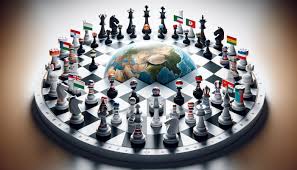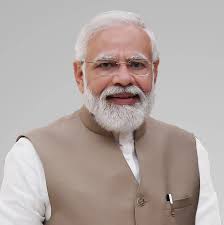
BRICS Expansion and Global Shifts: The inclusion of new members in BRICS+ marks a significant shift in global power dynamics, challenging Western dominance.
Major Leadership Changes: Events like Modi’s third term, Trump’s re-election, and Sheikh Hasina’s resignation highlight leadership transitions shaping regional and global policies.
Persistent Geopolitical Tensions: Escalations in the Middle East, Ukraine, and global arms races emphasize the challenges of maintaining stability amid evolving international conflicts.
Geopolitics is the chessboard of history, where every move shapes the future. The year 2024 was a testament to this idea, marked by seismic shifts and pivotal events that have set the stage for a transformative 2025. From the expansion of BRICS to the conclusion of Syria’s long-standing civil war, the global stage was alive with maneuvers that will echo for years to come. As nations grappled with choices between alliances and adversarial paths, 2024 reminded us that the balance of power is ever-changing. It underscored that amidst turmoil, there is opportunity for collaboration, growth, and redefinition of global roles. The events of the year not only reflect strategic decision-making but also the underlying currents of human ambition and resilience. What does this dynamic landscape mean for the road ahead? 2025 promises to demand even bolder decisions and more innovative diplomacy as the world seeks stability in an age of disruption.

Key Geopolitical Events of 2024
BRICS+ Expansion: During the 15th BRICS Summit, the much-anticipated expansion of BRICS took shape. Egypt, Ethiopia, Iran, and the UAE joined its ranks, marking the first phase of an ambitious enlargement plan. With this expansion, BRICS+ now represents 50% of the global population and nearly a quarter of the world’s GDP, signaling a significant counterbalance to Western hegemony.

PM Modi’s Third Term: Prime Minister Narendra Modi secured a historic third term in office, albeit with a reduced parliamentary majority. This shift suggests a more people-centric policy approach, contrasting the bold, transformative measures of his previous terms. With India poised for substantial growth, Modi’s leadership remains pivotal to navigating domestic and global challenges.
Sheikh Hasina’s Resignation: Bangladesh saw a dramatic upheaval as widespread protests over job quotas turned violent, resulting in the deaths of hundreds of students. Prime Minister Sheikh Hasina’s controversial remarks and subsequent crackdown culminated in her resignation and exile to India, leaving a leadership vacuum in Dhaka.
The Kursk Offensive: For the first time since World War II, foreign forces launched an incursion into Russian territory, targeting the Kursk region. North Korean troops joined Russian forces in a desperate bid to repel the attackers. As the conflict rages, it underscores the increasingly global stakes of regional disputes.
Iran Targets Israel: Iran and its proxies launched hundreds of guided missiles and drones at Israel, disrupting key infrastructure. This escalation has heightened tensions in an already volatile Middle East, drawing international focus on the region’s precarious balance of power.
Trump’s Re-election: Donald Trump’s return to the White House marks a historic non-consecutive second term. His presidency is expected to boost U.S.-Israel relations while potentially curtailing aid to Ukraine, signaling a significant pivot in American foreign policy.
The End of Assad’s Rule: Syria’s civil war reached a dramatic conclusion with the ousting of Bashar al-Assad. Abu Mohammad al-Julani, once affiliated with Al-Qaeda, has rebranded his group as a force for peace and development, ushering in a new chapter for the war-torn nation.
These events highlight a year of upheaval and transformation, from BRICS’s assertion as an alternative global power bloc to the unsettling resurgence of authoritarianism and conflict. The world, it seems, stands at a crossroads.
Looking Ahead: Geopolitical Trends for 2025
As 2025 dawns, nations face a choice between cooperation and confrontation. The coming year will test global resilience and adaptability in an era of shifting power dynamics.
- Trump Administration’s Impact: Donald Trump’s policies may deepen economic nationalism, triggering a bifurcated global economy. His unwavering support for Israel could exacerbate tensions with Iran, while his protectionist trade policies may alter the dynamics of international commerce.
- Middle East Instability: The region’s geopolitical landscape is expected to remain turbulent, with escalating tensions between Israel and Iran. While economic recovery in non-oil sectors offers hope, unresolved conflicts in Lebanon and other hotspots threaten progress.
- Prolonged War in Ukraine: The Russia-Ukraine conflict is unlikely to abate, with military engagements continuing to devastate the region. Attempts at peace will face numerous hurdles, deepening the humanitarian crisis and further straining East-West relations.
- Intensified Arms Race: Global military spending is set to rise as the U.S., Russia, China, and others expand their arsenals. This arms race threatens to undermine non-proliferation efforts, increasing the risk of regional and global instability.
- Worsening Refugee Crisis: Prolonged conflicts will displace millions, intensifying the refugee crisis. Europe will face mounting pressure to accommodate displaced populations, fueling contentious debates over immigration policies.
- Trade Wars and Economic Fragmentation: U.S.-China tensions are expected to escalate, with proposed tariffs disrupting global trade. These strained relations will likely lead to fragmented trade blocs and slower economic growth.
The Economic Outlook for 2025
Despite geopolitical uncertainties, the global economy is projected to grow at a moderate 2.7%. The U.S. economy is expected to expand by 2.2%, while China’s growth may slow to 4.5% amidst domestic challenges. India, emerging as a beacon of resilience, is set to achieve an impressive 6.4% growth, driven by robust reforms and innovation.
This resilience amidst turbulence reflects a transformative period in global history. Even as geopolitical tensions escalate, nations demonstrate an ability to adapt and strive for economic progress.
Navigating the Crossroads
The coming year offers an opportunity for nations to redefine their roles on the world stage. Through bold leadership, innovative policies, and a shared commitment to peace, 2025 could mark the beginning of a new era, one where global challenges are met with collective resolve, and the promise of progress transcends borders.
The future belongs to those who prepare for it today, said Malcolm X, African American revolutionary, a sentiment that resonates deeply as we step into 2025. The events of 2024 underscored the interconnectedness of the global community and the urgency of collective action. From fostering new alliances to addressing age-old conflicts, the coming year offers a unique opportunity to shape a world rooted in stability, inclusivity, and innovation.
As nations grapple with choices that will define their futures, 2025 invites us to think beyond borders and ideologies. It is a year that demands courage, cooperation, and a steadfast commitment to shared progress. In this transformative period, the lessons of the past must guide us, and the promise of the future must inspire us to build a better world.
Diksha Bharti is currently pursuing a Master’s program in Russian studies. She has previously worked as a Research Associate at Politika and the Consilium Research Institute. She has a keen interest in geopolitics and has contributed to several reputed platforms. Views expressed are the author’s own.
